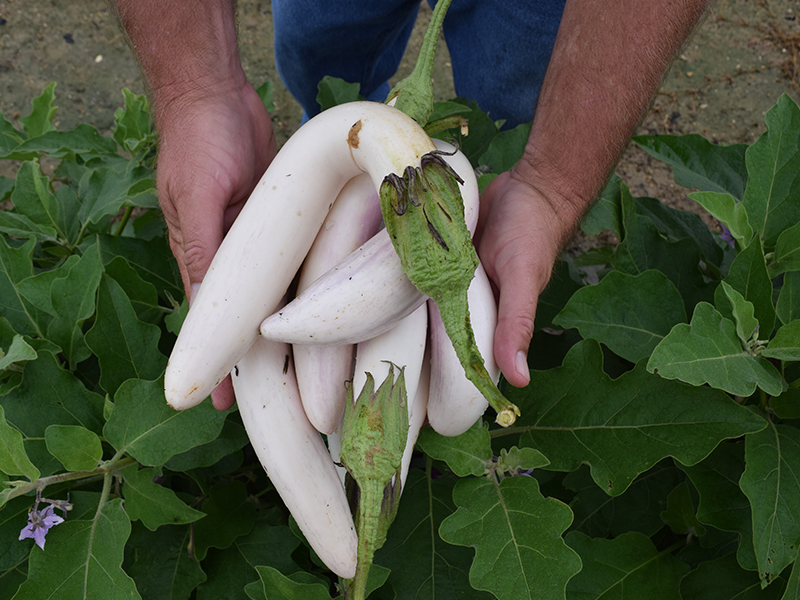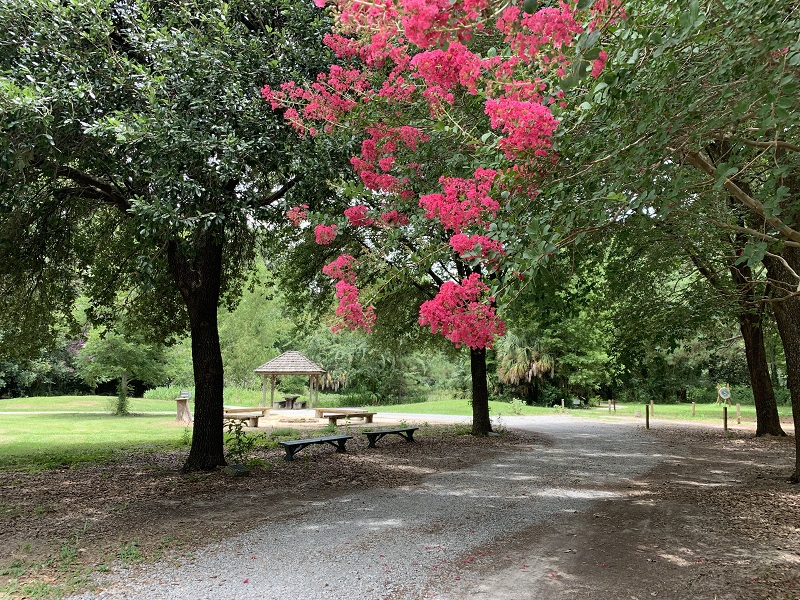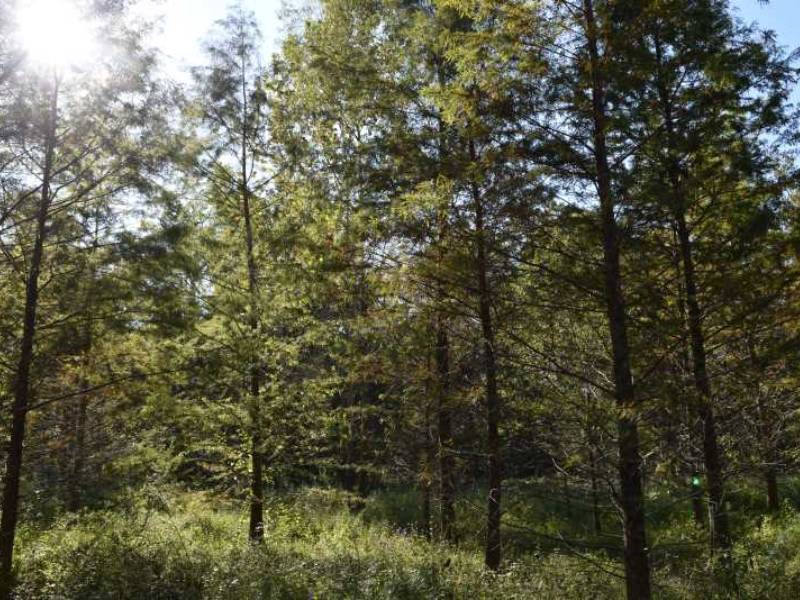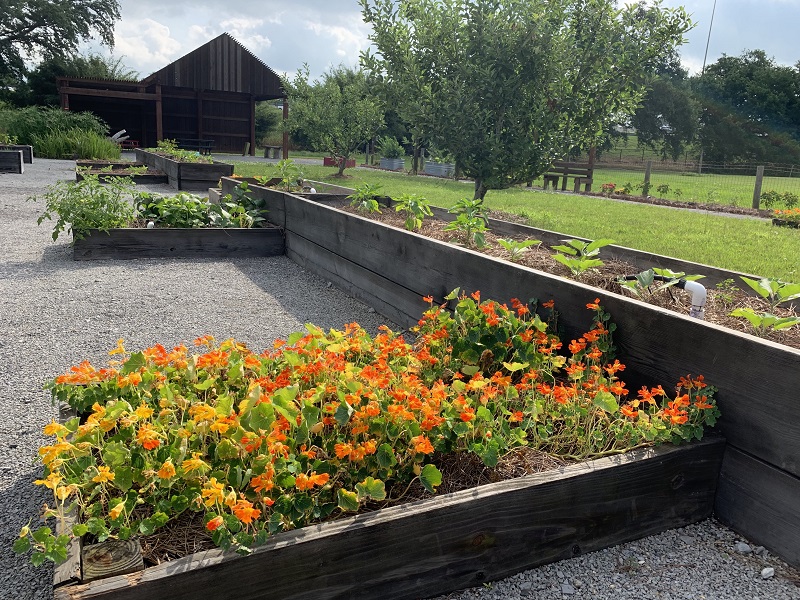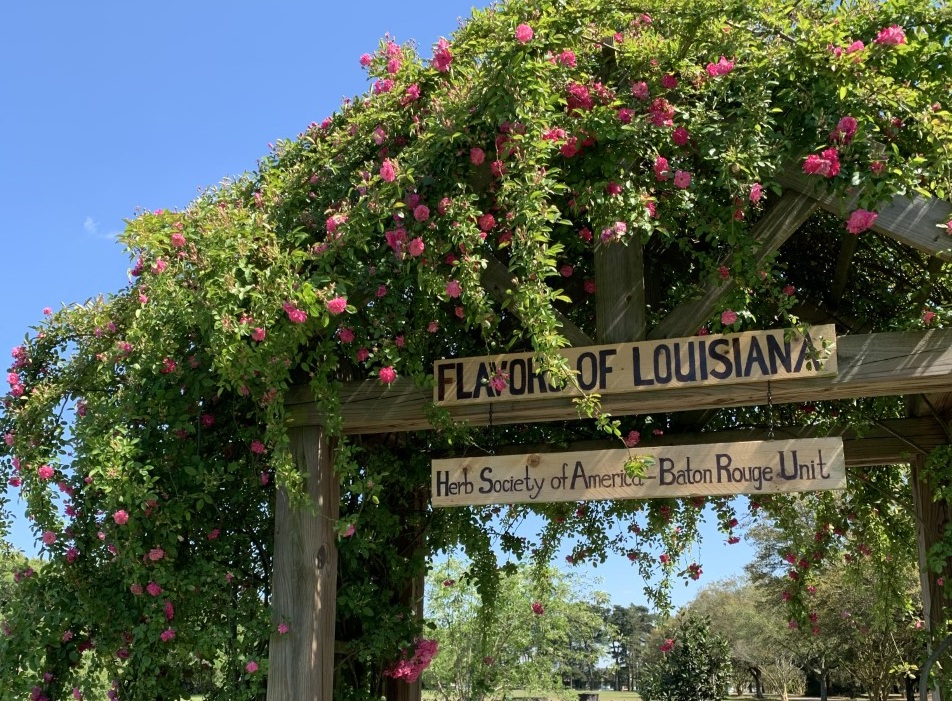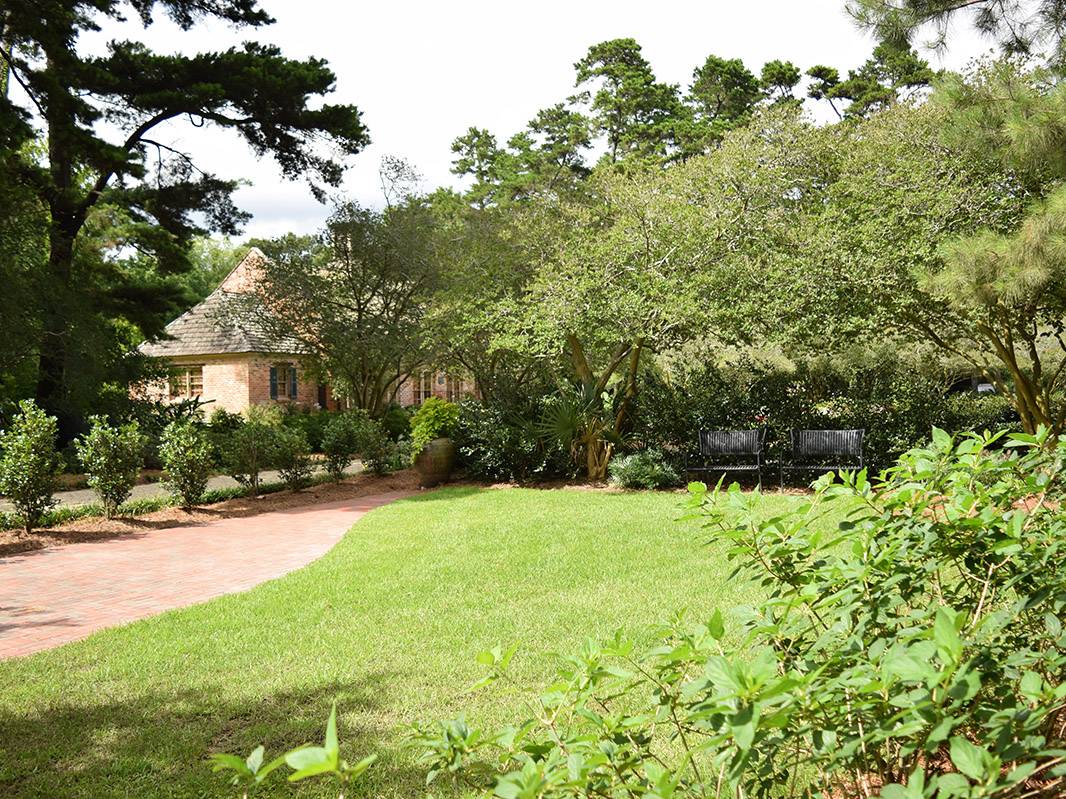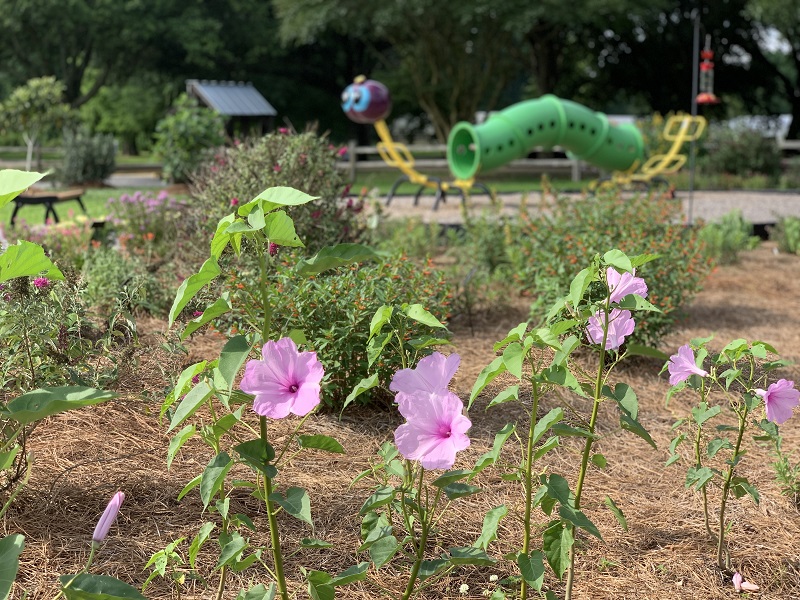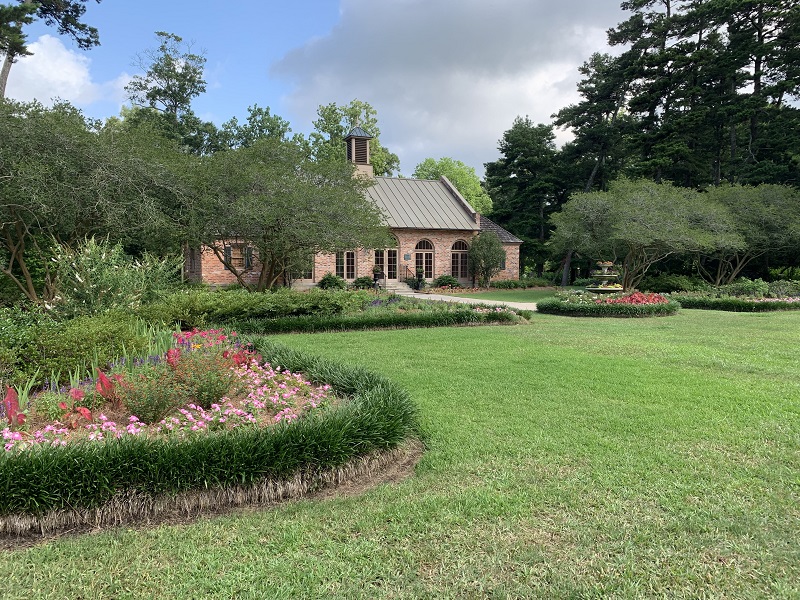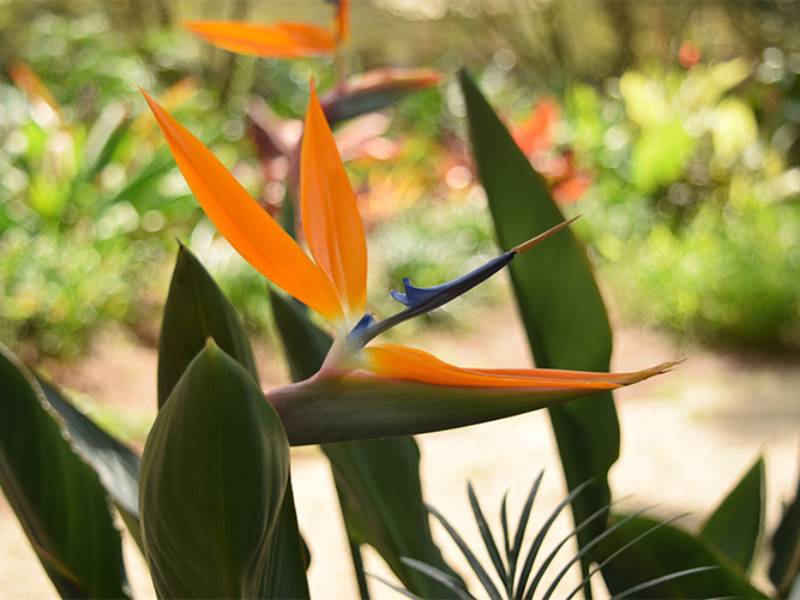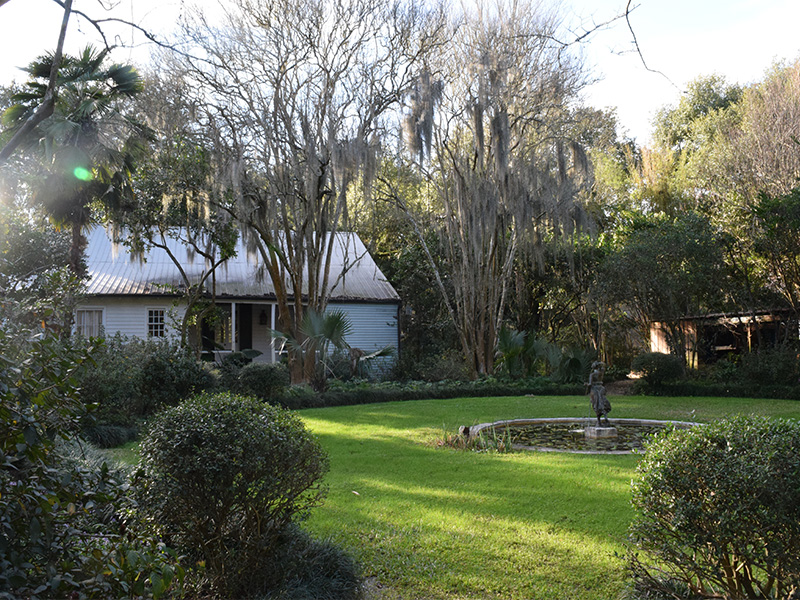Visit our Gardens!
All-America Selection Trials | Barton Arboretum | Barton Pond and Palmetto Walk | Burden Woods | Children's Garden | Herb Garden | Crowder Camellia Collection
Memory Garden | Pollinator Garden | Rose Garden | Steele Burden Memorial Orangerie Garden | Stone Camellia Collection | Tropical Garden | Trees & Trails | Windrush Garden
See our Visitor Information page to download maps of the gardens.
See our Garden Rentals page for more information on renting the facility.
All-America Selection Trials
The All-America Trials highlight annual herbaceous ornamentals and vegetables from the current and past All-America Selection trial winners. The Botanic Gardens at Burden is the official Louisiana trial site for this program. Other plants highlighted in this area are some of the Louisiana Super Plants along with other annuals and perennials considered suitable for growing in the Gulf South. Plant selections are rotated each fall and spring so that new selections can be added. This garden is located at the Food and Fiber Research Facility.
Barton Arboretum
Designed by Steele Burden in memory of Burden Foundation founding member, Scott Duchein Barton, the Barton Arboretum is enclosed by spruce pine and has a circular drive through live oaks which memorialize friends and dignitaries who over the years made significant contributions to the LSU AgCenter. Native trees were planted among the pines and a small pond provides a setting for quiet reflection. Included in the arboretum are the James Wandersee Palmetto Walk and the Florence and Charles Crowder Camellia Collection. The Barton Arboretum is located at the end of the oak alley just past the Rural Life Museum. It can also be accessed on foot using our trail system in the Burden Woods.
Barton Arboretum Pond and Palmetto Walk
Steele Burden's signature landscapes always included a water feature. The soil from the Barton Arboretum Pond enhances the topography of the area. An abundance of plants line the pond including beautiful Louisiana irises. This serene space has a gazebo overlooking the water feature. The James Wandersee Palmetto Walk was designed by Dr. James H. Wandersee and Dr. Renee Clary in the Spring of 2005. The walk, using best signage practices researched by EarthScholars Research Group™, was developed with educational stations detailing historical and botanical facts about this Louisiana native plant.
Burden Woods
The Burden Woods covers approximately 150 acres of the Botanic Gardens 440 acres and is primarily a bottomland hardwood forest. The dominant overstory plants are sweet gum, sycamore, cypress, black willow, water oak, red maple, overcup, willow, water and swamp chestnut, shellbark hickory, hackberry and elm. A rain-fed wetland called the "Black Swamp" lies at the northern end of the trail system with 200 year old tupelos. The Burden Woods is also home to Trees and Trails, a trail system that was part of the Steele Burden's vision to provide the community access to an urban forest. The Burden Woods incurred extensive damage during Hurricane Gustav and the woods are currently being restored with the help of the Baton Rouge community through an annual tree planting event, Arbor Day at Burden. The Burden Woods is also home to the docent lead educational program for school children, Trees and Trails/Project Learning Tree. Take a virtual tour!
Children's Garden
The Children’s Garden was designed for people of all ages to enjoy but especially designed for children. As you meander through the pathways you’ll come in contact with both butterfly and edible plants. As the season changes, so will the plants; the garden is ever-changing, so there’s always something new to see. Visiting children are encouraged to touch, feel, smell and enjoy the garden space. Children should also bring an open mind and belly. We have many different types of fruit and vegetables planted in the garden. Depending on the season, various edible plants will be ready for harvest. Children are encouraged to snap off a tomato, pick a piece of broccoli, pull a carrot or radish and take a bite. We really want to encourage a wider palate in our youth!
Crowder Camellia Collection
The Early American Camellia Collection was implemented in 2016 through a contribution from the we received funding from the Lamar Family Foundation. This garden features many of the first camellias brought to the United States prior to 1900 and used in gardens across the country. The intent of this garden is to preserve the horticulture history of these camellia so that future generations will come to know the beginnings from which the modern varieties are derived. Florence Crowder, a camellia expert known worldwide, has spent many years conducting extensive research to locate catalogs and documents containing the needed information on these camellias bringing the cuttings back to the United States for this collection. View our camellia gallery.
Herb Garden
This garden is sponsored by the Baton Rouge Unit of the Herb Society of America and serves as an educational garden for those who wish to develop a better understanding of herbal plants and how they can enrich our mind, body and spirit. The Herb Garden will be comprised of four separate gardens, each with special theme and reflecting the various influences of the peoples who have lived in our state. The first garden was installed in 2015 and is a “Louisiana Kitchen Garden” displaying culinary and medicinal herbs common to our early gardens. Visitors learn what role these plants played historically and their uses today. The remaining gardens will be installed soon and will feature the influences of Native Americans, Africans, Caribbean Islanders, French, Spanish and other Europeans that came to Louisiana, each bringing their own gardening style and plant materials. The last section of the garden will be “The Natural Garden” which will include native herbal plants.
Memory Garden
The Memory Garden was designed as a quiet space for reflection, recognizing those who have contributed to the gardens and those who our patrons have honored. The Memory Garden also offers an elegant location for your intimate event. Please visit our Rentals page for more information.
Pollinator Garden
The Pollinator Garden and Children’s Playground is a wonderful place for learning and discovery. Children can explore the wonders of the outside world in a fun, motivating way. There are interactive nature signs about pollinators including bees and butterflies, and a playground where students can climb honeycombs, talk through flower heads, ride on the backs of honeybees, and see-saw on dragonflies. Children learn about the pollinators necessary in the pollination of vegetables and fruits including: tomatoes, cucumbers, squash, apples, blueberries and other flowering plants. Take a virtual tour!
Rose Garden
The Rose Garden was originally located at the Horticulture Hill Farm on the LSU campus and was moved to the Botanic Gardens in the early 1980s. This garden was a favorite of Steele Burden. He was known to cut roses from the garden and surprise friends and supporters with a bouquet. The garden was part of the American Rose Society trial program, a nationwide program that trialed and displayed winning hybrid tea roses. This program was replaced by two new research programs; American Garden Rose Selections, a nationwide network of approved public gardens, and the American Rose Trails for Sustainability program. View our Rose Gallery. Take a virtual tour!
Steele Burden Memorial Orangerie Garden
The Orangerie Garden is an herbaceous annual and perennial display garden featuring seasonal landscape color. Homeowners and landscapers can review some of the newest bedding plants to use in their gardens and landscapes. Contact us at (225) 763-3990 or botanicgardens@agcenter.lsu.edu for reservations. Please view our Rentals page for more information on how to reserve the area. Take a virtual tour!
Stone Camellia Collection
The Botanic Gardens contain one of the largest private camellia collections in the U.S.A. and is recognized as an International Camellia Garden of Excellence. Camellias are found throughout the gardens. In 2002, more than 450 identified camellia varieties from the private collection of American camellia enthusiasts Violet and Hank Stone were propagated from cuttings and planted under live oaks and pine trees along the drive through the property. Some of the varieties are rare and valuable, as part of the collection the Stones had accumulated over more than 50 years. Many of them were originated or introduced by the Stones. The Windrush Garden itself includes a historic collection of many of the older camellias popular in south Louisiana. The Early American Camellia Garden in the Barton Arboretum contains camellias that were introduced to the American landscape prior to 1900. View our camellia gallery.
Tropical Garden
The Tropical Garden features one of the largest collections of gingers in the United States. These gingers have been collected from Southeast Asia and other tropical areas from around the world. Other plant collections in this garden include plumeria, bromeliads, alocacia and calolcacia. The best time to visit this garden is July through September.Trees and Trails
Trees and Trails is approximately three miles of pedestrian, recreational and educational trails located in the Burden Woods. Trees and Trails was designed to support a variety of pedestrian activities including interpretive and educational activities for youth and adults, hiking, adventure and discovery. This trail system provides a framework for nature experiences with educational objectives. Outdoor classrooms are used for the docent-led Project Learning Tree (PLT) program. PLT is a program for students in grades 4 through 7 that focuses on the surrounding natural world, the importance of maintaining ecosystems in an urban environment and the cultural heritage of our region. We welcome and encourage schools and organizations at all age levels to come and enjoy Trees and Trails both as an educational and fitness opportunity. For more information, please view our Trees and Trails section.
Windrush Gardens
Windrush Gardens are the life’s work of Steele Burden, the youngest of the Burden Family. Steele was naturally artistic and was a self-taught landscape architect. Steele toured the important gardens of Europe and he also worked in some of the surviving gardens of 19th century Louisiana plantations. Both of these earlier garden types influenced his approach to garden design and his life’s work, Windrush Gardens. Some of Steele’s favorite landscape plants included in the gardens are majestic live oaks and ancient crape myrtles that create a shady canopy over azaleas and camellias, evoking a sense of tranquility and peace. The winding paths are ideal for strolling and enjoying the 25 acres of landscaped spaces. Please visit our Windrush page for more information.


